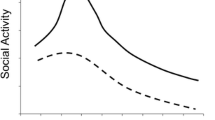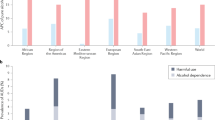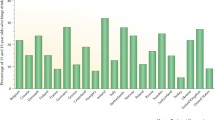Abstract
Purpose of Review
Human laboratory studies involving alcohol administration have generated critical knowledge about individual differences in risk for alcohol use disorder (AUD), but have primarily involved adult populations and cross-sectional research designs. Ethical constraints have largely precluded human laboratory alcohol research in adolescence, and prospective studies have been rare. This paper provides an overview of developmental considerations in human laboratory alcohol research, with a focus on studies conducted with youth.
Recent Findings
Recent human laboratory studies from Europe and Canada have examined aspects of alcohol response during late adolescence, while recent survey studies from the USA have highlighted methods for circumventing alcohol administration in studies of adolescents.
Summary
Across several decades of research, exceedingly few laboratory studies have examined developmental differences in alcohol responses or utilized prospective designs. Efforts to prioritize prospective research would further clarify the role of alcohol sensitivity traits as predictors of AUD onset and/or indices of AUD progression.

Similar content being viewed by others
References
Papers of particular interest, published recently, have been highlighted as: • Of importance •• Of major importance
Bujarski S, Ray LA. Experimental psychopathology paradigms for alcohol use disorders: applications for translational research. Behav Res Ther. 2016;86:11–22. https://doi.org/10.1016/j.brat.2016.05.008.
Morean ME, Corbin WR. Subjective response to alcohol: a critical review of the literature. Alcohol Clin Exp Res. 2010;34(3):385–95. https://doi.org/10.1111/j.1530-0277.2009.01103.x.
Plebani JG, Ray LA, Morean ME, Corbin WR, MacKillop J, Amlung M, et al. Human laboratory paradigms in alcohol research. Alcohol Clin Exp Res. 2012;36(6):972–83. https://doi.org/10.1111/j.1530-0277.2011.01704.x.
King AC, de Wit H, McNamara PJ, Cao D. Rewarding, stimulant, and sedative alcohol responses and relationship to future binge drinking. Arch Gen Psychiatry. 2011;68(4):389–99. https://doi.org/10.1001/archgenpsychiatry.2011.26.
King AC, Roche DJ, Rueger SY. Subjective responses to alcohol: a paradigm shift may be brewing. Alcohol Clin Exp Res. 2011;35(10):1726–8. https://doi.org/10.1111/j.1530-0277.2011.01629.x.
Quinn PD, Fromme K. Subjective response to alcohol challenge: a quantitative review. Alcohol Clin Exp Res. 2011;35(10):1759–70. https://doi.org/10.1111/j.1530-0277.2011.01521.x.
• Ray LA, Mackillop J, Monti PM. Subjective responses to alcohol as an endophenotype: implications for alcoholism etiology and treatment development. In: MacKillop J, Munafò MR, editors. Genetic influences on addiction. Cambridge: MIT Press; 2013. p. 97–120. Reviews the rationale and evidence for studying subjective responses as endophenotypes for AUD.
Salvatore JE, Gottesman II, Dick DM. Endophenotypes for alcohol use disorder: an update on the field. Curr Addict Rep. 2015;2(1):76–90. https://doi.org/10.1007/s40429-015-0046-y.
Ray LA, Bujarski S, Roche DJ. Subjective response to alcohol as a research domain criterion. Alcohol Clin Exp Res. 2016;40(1):6–17. https://doi.org/10.1111/acer.12927.
Bujarski S, Hutchison KE, Roche DJ, Ray LA. Factor structure of subjective responses to alcohol in light and heavy drinkers. Alcohol Clin Exp Res. 2015;39(7):1193–202. https://doi.org/10.1111/acer.12737.
Ray LA, MacKillop J, Leventhal A, Hutchison KE. Catching the alcohol buzz: an examination of the latent factor structure of subjective intoxication. Alcohol Clin Exp Res. 2009;33(12):2154–61. https://doi.org/10.1111/j.1530-0277.2009.01053.x.
King AC, McNamara PJ, Hasin DS, Cao D. Alcohol challenge responses predict future alcohol use disorder symptoms: a 6-year prospective study. Biol Psychiatry. 2014;75(10):798–806. https://doi.org/10.1016/j.biopsych.2013.08.001.
Zoethout RW, Delgado WL, Ippel AE, Dahan A, van Gerven JM. Functional biomarkers for the acute effects of alcohol on the central nervous system in healthy volunteers. Br J Clin Pharmacol. 2011;71(3):331–50. https://doi.org/10.1111/j.1365-2125.2010.03846.x.
Behar D, Berg CJ, Rapoport JL, Nelson W, Linnoila M, Cohen M, et al. Behavioral and physiological effects of ethanol in high-risk and control children: a pilot study. Alcohol Clin Exp Res. 1983;7(4):404–10.
• Camarini R, Pautassi RM. Behavioral sensitization to ethanol: neural basis and factors that influence its acquisition and expression. Brain Res Bull. 2016;125:53–78. https://doi.org/10.1016/j.brainresbull.2016.04.006. Provides a comprehensive review on studies of alcohol sensitization in rodents.
Zimmermann US, O’Connor S, Ramchandani VA. Modeling alcohol self-administration in the human laboratory. Curr Top Behav Neurosci. 2013;13:315–53. https://doi.org/10.1007/7854_2011_149.
Crabbe JC, Bell RL, Ehlers CL. Human and laboratory rodent low response to alcohol: is better consilience possible? Addict Biol. 2010;15(2):125–44. https://doi.org/10.1111/j.1369-1600.2009.00191.x.
Dutta S, Sengupta P. Men and mice: relating their ages. Life Sci. 2016;152:244–8. https://doi.org/10.1016/j.lfs.2015.10.025.
Sengupta P. The laboratory rat: relating its age with human’s. Int J Prev Med. 2013;4(6):624.
Jones A, Field M. The effects of cue-specific inhibition training on alcohol consumption in heavy social drinkers. Exp Clin Psychopharmacol. 2013;21(1):8–16. https://doi.org/10.1037/a0030683.
Mick I, Spring K, Uhr M, Zimmermann US. Alcohol administration attenuates hypothalamic-pituitary-adrenal (HPA) activity in healthy men at low genetic risk for alcoholism, but not in high-risk subjects. Addict Biol. 2013;18(5):863–71. https://doi.org/10.1111/j.1369-1600.2011.00420.x.
Christiansen P, Rose AK, Cole JC, Field M. A comparison of the anticipated and pharmacological effects of alcohol on cognitive bias, executive function, craving and ad-lib drinking. J Psychopharmacol. 2013;27(1):84–92. https://doi.org/10.1177/0269881112450787.
Scheel JF, Schielke K, Lautenbacher S, Aust S, Kremer S, Wolstein J. Low-dose alcohol effects on attention in adolescents. Z Neuropsychol. 2013;24(2):103–11.
Marxen M, Gan G, Schwarz D, Mennigen E, Pilhatsch M, Zimmermann US, et al. Acute effects of alcohol on brain perfusion monitored with arterial spin labeling magnetic resonance imaging in young adults. J Cereb Blood Flow Metab. 2014;34(3):472–9. https://doi.org/10.1038/jcbfm.2013.223.
Rose AK, Jones A, Clarke N, Christiansen P. Alcohol-induced risk taking on the BART mediates alcohol priming. Psychopharmacology. 2014;231(11):2273–80. https://doi.org/10.1007/s00213-013-3377-1.
Gan G, Guevara A, Marxen M, Neumann M, Junger E, Kobiella A, et al. Alcohol-induced impairment of inhibitory control is linked to attenuated brain responses in right fronto-temporal cortex. Biol Psychiatry. 2014;76(9):698–707. https://doi.org/10.1016/j.biopsych.2013.12.017.
Gan G, Sterzer P, Marxen M, Zimmermann US, Smolka MN. Neural and behavioral correlates of alcohol-induced aggression under provocation. Neuropsychopharmacology. 2015;40(13):2886–96. https://doi.org/10.1038/npp.2015.141.
Rose AK, Hardman CA, Christiansen P. The effects of a priming dose of alcohol and drinking environment on snack food intake. Appetite. 2015;95:341–8. https://doi.org/10.1016/j.appet.2015.07.016.
Wardell JD, Ramchandani VA, Hendershot CS. A multilevel structural equation model of within- and between-person associations among subjective responses to alcohol, craving, and laboratory alcohol self-administration. J Abnorm Psychol. 2015;124(4):1050–63. https://doi.org/10.1037/abn0000121.
Strang NM, Claus ED, Ramchandani VA, Graff-Guerrero A, Boileau I, Hendershot CS. Dose-dependent effects of intravenous alcohol administration on cerebral blood flow in young adults. Psychopharmacology. 2015;232(4):733–44. https://doi.org/10.1007/s00213-014-3706-z.
Hendershot CS, Wardell JD, Strang NM, Markovich MS, Claus ED, Ramchandani VA. Application of an alcohol clamp paradigm to examine inhibitory control, subjective responses, and acute tolerance in late adolescence. Exp Clin Psychopharmacol. 2015;23(3):147–58. https://doi.org/10.1037/pha0000017.
Christiansen P, Rose A, Randall-Smith L, Hardman CA. Alcohol’s acute effect on food intake is mediated by inhibitory control impairments. Health Psychol. 2016;35(5):518–22. https://doi.org/10.1037/hea0000320.
Hendershot CS, Claus ED, Ramchandani VA. Associations of OPRM1 A118G and alcohol sensitivity with intravenous alcohol self-administration in young adults. Addict Biol. 2016;21(1):125–35. https://doi.org/10.1111/adb.12165.
Hendershot CS, Wardell JD, McPhee MD, Ramchandani VA. A prospective study of genetic factors, human laboratory phenotypes, and heavy drinking in late adolescence. Addict Biol. 2016; https://doi.org/10.1111/adb.12397.
Jünger E, Gan G, Mick I, Seipt C, Markovic A, Sommer C, et al. Adolescent women induce lower blood alcohol levels than men in a laboratory alcohol self-administration experiment. Alcohol Clin Exp Res. 2016;40(8):1769–78. https://doi.org/10.1111/acer.13122.
Korucuoglu O, Gladwin TE, Baas F, Mocking RJ, Ruhe HG, Groot PF, et al. Neural response to alcohol taste cues in youth: effects of the OPRM1 gene. Addict Biol. 2016; https://doi.org/10.1111/adb.12440.
Korucuoglu O, Gladwin TE, Wiers RW. The effect of acute alcohol on motor-related EEG asymmetries during preparation of approach or avoid alcohol responses. Biol Psychol. 2016;114:81–92. https://doi.org/10.1016/j.biopsycho.2015.12.012.
McGrath E, Jones A, Field M. Acute stress increases ad-libitum alcohol consumption in heavy drinkers, but not through impaired inhibitory control. Psychopharmacology. 2016;233(7):1227–34. https://doi.org/10.1007/s00213-016-4205-1.
Robinson E, Oldham M, Sharps M, Cunliffe A, Scott J, Clark E, et al. Social imitation of alcohol consumption and ingratiation motives in young adults. Psychol Addict Behav. 2016;30(4):442–9. https://doi.org/10.1037/adb0000150.
Di Lemma LCG, Field M. Cue avoidance training and inhibitory control training for the reduction of alcohol consumption: a comparison of effectiveness and investigation of their mechanisms of action. Psychopharmacology. 2017;234(16):2489–98. https://doi.org/10.1007/s00213-017-4639-0.
Jünger E, Javadi AH, Wiers CE, Sommer C, Garbusow M, Bernhardt N, et al. Acute alcohol effects on explicit and implicit motivation to drink alcohol in socially drinking adolescents. J Psychopharmacol. 2017;31(7):893–905. https://doi.org/10.1177/0269881117691454.
National Advisory Council on Alcohol Abuse and Alcoholism. Recommended council guidelines on ethyl alcohol administration in human experimentation. Rockville, MD: Department of Health and Human Services 2005. Available at: https://www.niaaa.nih.gov/Resources/ResearchResources/job22.htm
• Crews FT, Vetreno RP, Broadwater MA, Robinson DL. Adolescent alcohol exposure persistently impacts adult neurobiology and behavior. Pharmacol Rev. 2016;68(4):1074–109. https://doi.org/10.1124/pr.115.012138. Provides a comprehensive review of neurodevelopmental consequences of adolescent alcohol exposure.
Briones TL, Woods J. Chronic binge-like alcohol consumption in adolescence causes depression-like symptoms possibly mediated by the effects of BDNF on neurogenesis. Neuroscience. 2013;254:324–34. https://doi.org/10.1016/j.neuroscience.2013.09.031.
Crews FT, Vetreno RP. Neuroimmune basis of alcoholic brain damage. Int Rev Neurobiol. 2014;118:315–57. https://doi.org/10.1016/b978-0-12-801284-0.00010-5.
Ehlers CL, Criado JR. Adolescent ethanol exposure: does it produce long-lasting electrophysiological effects? Alcohol. 2010;44(1):27–37. https://doi.org/10.1016/j.alcohol.2009.09.033.
Guerri C, Pascual M. Mechanisms involved in the neurotoxic, cognitive, and neurobehavioral effects of alcohol consumption during adolescence. Alcohol. 2010;44(1):15–26. https://doi.org/10.1016/j.alcohol.2009.10.003.
Pandey SC, Kyzar EJ, Zhang H. Epigenetic basis of the dark side of alcohol addiction. Neuropharmacology. 2017;122:74–84. https://doi.org/10.1016/j.neuropharm.2017.02.002.
Daoura L, Haaker J, Nylander I. Early environmental factors differentially affect voluntary ethanol consumption in adolescent and adult male rats. Alcohol Clin Exp Res. 2011;35(3):506–15. https://doi.org/10.1111/j.1530-0277.2010.01367.x.
Serlin H, Torregrossa MM. Adolescent rats are resistant to forming ethanol seeking habits. Dev Cogn Neurosci. 2015;16:183–90. https://doi.org/10.1016/j.dcn.2014.12.002.
Spear LP. Consequences of adolescent use of alcohol and other drugs: studies using rodent models. Neurosci Biobehav Rev. 2016;70:228–43. https://doi.org/10.1016/j.neubiorev.2016.07.026.
Center for Behavioral Health Statistics and Quality. 2015 national survey on drug use and health: detailed tables. Rockville: Substance Abuse and Mental Health Services Administration; 2016.
Windle M, Zucker RA. Reducing underage and young adult drinking: how to address critical drinking problems during this developmental period. Alcohol Res Health. 2010;33(1–2):29–44.
•• Spear LP. Alcohol consumption in adolescence: a translational perspective. Curr Addict Rep. 2016;3:50–61. https://doi.org/10.1007/s40429-016-0088-9. Provides an updated review of adolescent alcohol consumption and its correlates, with a focus on consilient findings across human and preclinical studies.
Hasin DS, Stinson FS, Ogburn E, Grant BF. Prevalence, correlates, disability, and comorbidity of DSM-IV alcohol abuse and dependence in the United States: results from the National Epidemiologic Survey on Alcohol and Related Conditions. Arch Gen Psychiatry. 2007;64(7):830–42. https://doi.org/10.1001/archpsyc.64.7.830.
Li TK, Hewitt BG, Grant BF. Alcohol use disorders and mood disorders: a National Institute on Alcohol Abuse and Alcoholism perspective. Biol Psychiatry. 2004;56(10):718–20. https://doi.org/10.1016/j.biopsych.2004.03.006.
Hingson RW, Zha W, Weitzman ER. Magnitude of and trends in alcohol-related mortality and morbidity among U.S. college students ages 18–24, 1998–2005. J Stud Alcohol Drugs Suppl. 2009;(16):12–20.
Rehm J, Mathers C, Popova S, Thavorncharoensap M, Teerawattananon Y, Patra J. Global burden of disease and injury and economic cost attributable to alcohol use and alcohol-use disorders. Lancet. 2009;373(9682):2223–33. https://doi.org/10.1016/S0140-6736(09)60746-7.
Carrara-Nascimento PF, Olive MF, Camarini R. Ethanol pre-exposure during adolescence or adulthood increases ethanol intake but ethanol-induced conditioned place preference is enhanced only when pre-exposure occurs in adolescence. Dev Psychobiol. 2014;56(1):36–48. https://doi.org/10.1002/dev.21089.
Spear LP. Adolescent neurobehavioral characteristics, alcohol sensitivities, and intake: setting the stage for alcohol use disorders? Child Dev Perspect. 2011;5(4):231–8. https://doi.org/10.1111/j.1750-8606.2011.00182.x.
Spear LP, Varlinskaya EI. Sensitivity to ethanol and other hedonic stimuli in an animal model of adolescence: implications for prevention science? Dev Psychobiol. 2010;52(3):236–43. https://doi.org/10.1002/dev.20457.
Chassin L, Sher KJ, Hussong A, Curran P. The developmental psychopathology of alcohol use and alcohol disorders: research achievements and future directions. Dev Psychopathol. 2013;25(4 Pt 2):1567–84. https://doi.org/10.1017/S0954579413000771.
Acheson SK, Stein RM, Swartzwelder HS. Alcohol Clin Exp Res. 1998;22(7):1437–42.
Baler RD, Volkow ND. Drug addiction: the neurobiology of disrupted self-control. Trends Mol Med. 2006;12(12):559–66. https://doi.org/10.1016/j.molmed.2006.10.005.
Bechara A. Decision making, impulse control and loss of willpower to resist drugs: a neurocognitive perspective. Nat Neurosci. 2005;8(11):1458–63. https://doi.org/10.1038/nn1584.
Koob GF, Volkow ND. Neurocircuitry of addiction. Neuropsychopharmacology. 2010;35(1):217–38. https://doi.org/10.1038/npp.2009.110.
Robinson TE, Berridge KC. The neural basis of drug craving: an incentive-sensitization theory of addiction. Brain Res Brain Res Rev. 1993;18(3):247–91.
• Bujarski S, Ray LA. Subjective response to alcohol and associated craving in heavy drinkers vs. alcohol dependents: an examination of Koob’s allostatic model in humans. Drug Alcohol Depend. 2014;140:161–7. https://doi.org/10.1016/j.drugalcdep.2014.04.015. Applies a human laboratory paradigm to test predictions from the allostatic model of addiction, demonstrating differences in responses to alcohol between non-dependent heavy drinkers and dependent drinkers.
Bujarski S, Hutchison KE, Prause N, Ray LA. Functional significance of subjective response to alcohol across levels of alcohol exposure. Addict Biol. 2017;22(1):235–45. https://doi.org/10.1111/adb.12293.
Schuckit MA, Smith TL. An 8-year follow-up of 450 sons of alcoholic and control subjects. Arch Gen Psychiatry. 1996;53(3):202–10.
•• King AC, Hasin D, O'Connor SJ, PJ MN, Cao D. A prospective 5-year re-examination of alcohol response in heavy drinkers progressing in alcohol use disorder. Biol Psychiatry. 2016;79(6):489–98. https://doi.org/10.1016/j.biopsych.2015.05.007. Reports the first controlled prospectve examination of changes in laboratory alcohol responses. Heavy drinkers completed baseline and follow-up alcohol challenge sessions spaced over a 5-year period.
Kalant H. Current state of knowledge about the mechanisms of alcohol tolerance. Addict Biol. 1996;1(2):133–41. https://doi.org/10.1080/1355621961000124756.
Amlung MT, Morris DH, McCarthy DM. Effects of acute alcohol tolerance on perceptions of danger and willingness to drive after drinking. Psychopharmacology. 2014;231(22):4271–9. https://doi.org/10.1007/s00213-014-3579-1.
Broadwater M, Varlinskaya EI, Spear LP. Chronic intermittent ethanol exposure in early adolescent and adult male rats: effects on tolerance, social behavior, and ethanol intake. Alcohol Clin Exp Res. 2011;35(8):1392–403. https://doi.org/10.1111/j.1530-0277.2011.01474.x.
Vanderschuren LJ, Kalivas PW. Alterations in dopaminergic and glutamatergic transmission in the induction and expression of behavioral sensitization: a critical review of preclinical studies. Psychopharmacology. 2000;151(2–3):99–120.
Quoilin C, Didone V, Tirelli E, Quertemont E. Developmental differences in ethanol-induced sensitization using postweanling, adolescent, and adult Swiss mice. Psychopharmacology. 2012;219(4):1165–77. https://doi.org/10.1007/s00213-011-2453-7.
Stevenson RA, Besheer J, Hodge CW. Comparison of ethanol locomotor sensitization in adolescent and adult DBA/2J mice. Psychopharmacology. 2008;197(3):361–70. https://doi.org/10.1007/s00213-007-1038-y.
Izenwasser S, French D. Tolerance and sensitization to the locomotor-activating effects of cocaine are mediated via independent mechanisms. Pharmacol Biochem Behav. 2002;73(4):877–82.
Meyer PJ, Phillips TJ. Bivalent effects of MK-801 on ethanol-induced sensitization do not parallel its effects on ethanol-induced tolerance. Behav Neuroosci. 2003;117(3):641–9.
Spear LP, Varlinskaya EI. Adolescence. Alcohol sensitivity, tolerance, and intake. Recent Dev Alcohol. 2005;17:143–59.
O'Connor S, Morzorati S, Christian J, Li TK. Clamping breath alcohol concentration reduces experimental variance: application to the study of acute tolerance to alcohol and alcohol elimination rate. Alcohol Clin Exp Res. 1998;22(1):202–10.
Sommer C, Seipt C, Spreer M, Blumke T, Markovic A, Junger E, et al. Laboratory alcohol self-administration experiments do not increase subsequent real-life drinking in young adult social drinkers. Alcohol Clin Exp Res. 2015;39(6):1057–63. https://doi.org/10.1111/acer.12716.
Chung T, Martin CS. Subjective stimulant and sedative effects of alcohol during early drinking experiences predict alcohol involvement in treated adolescents. J Stud Alcohol Drugs. 2009;70(5):660–7.
Schuckit MA, Smith TL, Trim RS, Heron J, Horwood J, Davis J, et al. The self-rating of the effects of alcohol questionnaire as a predictor of alcohol-related outcomes in 12-year-old subjects. Alcohol Alcohol. 2008;43(6):641–6. https://doi.org/10.1093/alcalc/agn077.
Corbin WR, Scott C, Leeman RF, Fucito LM, Toll BA, O'Malley SS. Early subjective response and acquired tolerance as predictors of alcohol use and related problems in a clinical sample. Alcohol Clin Exp Res. 2013;37(3):490–7. https://doi.org/10.1111/j.1530-0277.2012.01956.x.
Fridberg DJ, Rueger SY, Smith P, King AC. Association of anticipated and laboratory-derived alcohol stimulation, sedation, and reward. Alcohol Clin Exp Res. 2017;41(7):1361–9. https://doi.org/10.1111/acer.13415.
Morean ME, Corbin WR, Treat TA. The Anticipated Effects of Alcohol Scale: development and psychometric evaluation of a novel assessment tool for measuring alcohol expectancies. Psychol Assess. 2012;24(4):1008–23. https://doi.org/10.1037/a0028982.
• Miranda R Jr, Monti PM, Ray L, Treloar HR, Reynolds EK, Ramirez J, et al. Characterizing subjective responses to alcohol among adolescent problem drinkers. J Abnorm Psychol. 2014;123(1):117–29. https://doi.org/10.1037/a0035328. Reports the first comparison of adolescent versus adult subjective responses to alcohol based on naturalistic assessment via ecological momentary assessment.
Miranda R, Ray L, Blanchard A, Reynolds EK, Monti PM, Chun T, et al. Effects of naltrexone on adolescent alcohol cue reactivity and sensitivity: an initial randomized trial. Addict Biol. 2014;19(5):941–54. https://doi.org/10.1111/adb.12050.
Ramirez J, Miranda R Jr. Alcohol craving in adolescents: bridging the laboratory and natural environment. Psychopharmacology. 2014;231(8):1841–51. https://doi.org/10.1007/s00213-013-3372-6.
Treloar H, Celio MA, Lisman SA, Miranda R Jr, Spear LP. Subjective alcohol responses in a cross-sectional, field-based study of adolescents and young adults: effects of age, drinking level, and dependence/consequences. Drug Alcohol Depend. 2017;170:156–63. https://doi.org/10.1016/j.drugalcdep.2016.11.009.
Day AM, Celio MA, Lisman SA, Johansen GE, Spear LP. Acute and chronic effects of alcohol on trail making test performance among underage drinkers in a field setting. J Stud Alcohol Drugs. 2013;74(4):635–41.
Dai Z, Rosen IG, Wang C, Barnett N, Luczak SE. Using drinking data and pharmacokinetic modeling to calibrate transport model and blind deconvolution based data analysis software for transdermal alcohol biosensors. Math Biosci Eng. 2016;13(5):911–34. https://doi.org/10.3934/mbe.2016023.
Beauchaine TP, McNulty T. Comorbidities and continuities as ontogenic processes: toward a developmental spectrum model of externalizing psychopathology. Dev Psychopathol. 2013;25(4 Pt 2):1505–28. https://doi.org/10.1017/S0954579413000746.
Funding
The authors acknowledge funding support from the Canadian Institutes of Health Research and Canada Research Chairs Program (CH) and a postdoctoral research fellowship award from the Centre for Addiction and Mental Health (CN).
Author information
Authors and Affiliations
Corresponding author
Ethics declarations
Conflict of Interest
The authors declare that they have no conflict of interest.
Human and Animal Rights and Informed Consent
This article does not contain any studies with human or animal subjects performed by any of the authors.
Additional information
This article is part of the Topical Collection on Adolescent/Young Adult Addiction
Rights and permissions
About this article
Cite this article
Hendershot, C.S., Nona, C.N. A Review of Developmental Considerations in Human Laboratory Alcohol Research. Curr Addict Rep 4, 364–378 (2017). https://doi.org/10.1007/s40429-017-0173-8
Published:
Issue Date:
DOI: https://doi.org/10.1007/s40429-017-0173-8




